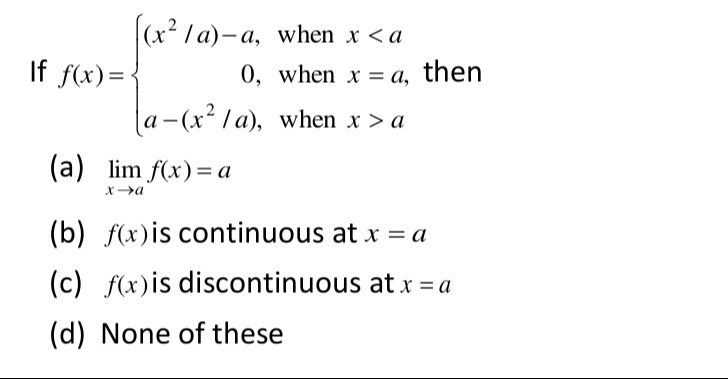Question
Question: If $f(x) = \begin{cases} (x^2/a)-a, \text{ when } x < a \\ 0, \text{ when } x = a, \text{ then }\\ ...
If
f(x)=⎩⎨⎧(x2/a)−a, when x<a0, when x=a, then a−(x2/a), when x>a

A
limx→af(x)=a
B
f(x) is continuous at x=a
C
f(x) is discontinuous at x=a
D
None of these
Answer
(b)
Explanation
Solution
To determine the correct answer, we need to analyze the continuity of the function f(x) at x=a.
First, we find the left-hand limit (LHL) as x approaches a:
limx→a−f(x)=limx→a−(ax2−a)=aa2−a=a−a=0
Next, we find the right-hand limit (RHL) as x approaches a:
limx→a+f(x)=limx→a+(a−ax2)=a−aa2=a−a=0
Since LHL = RHL = 0, the limit exists and limx→af(x)=0.
Now, we check the value of the function at x=a:
f(a)=0
Since limx→af(x)=f(a)=0, the function is continuous at x=a. Therefore, option (b) is correct.
